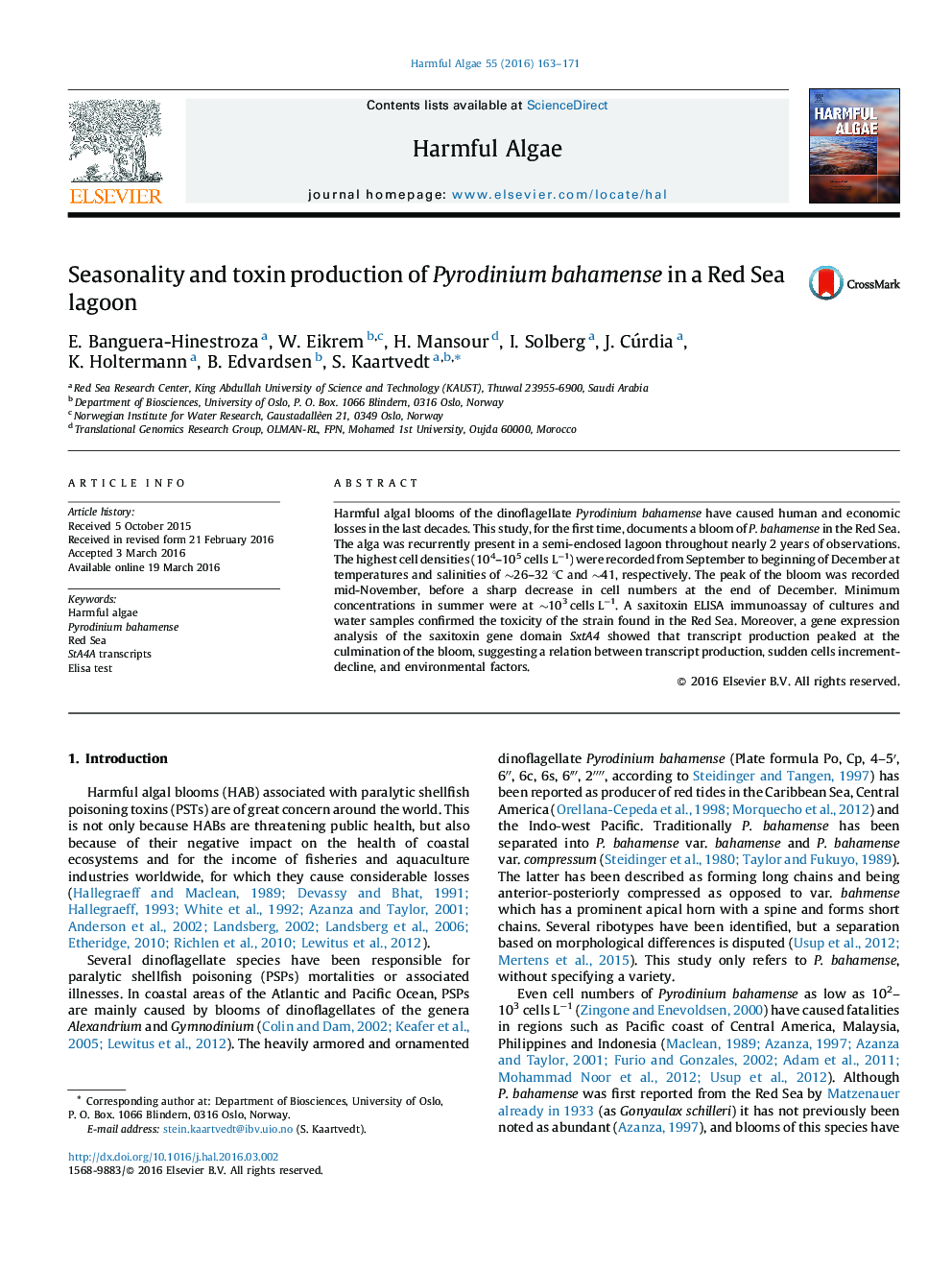| Article ID | Journal | Published Year | Pages | File Type |
|---|---|---|---|---|
| 4545138 | Harmful Algae | 2016 | 9 Pages |
Harmful algal blooms of the dinoflagellate Pyrodinium bahamense have caused human and economic losses in the last decades. This study, for the first time, documents a bloom of P. bahamense in the Red Sea. The alga was recurrently present in a semi-enclosed lagoon throughout nearly 2 years of observations. The highest cell densities (104–105 cells L−1) were recorded from September to beginning of December at temperatures and salinities of ∼26–32 °C and ∼41, respectively. The peak of the bloom was recorded mid-November, before a sharp decrease in cell numbers at the end of December. Minimum concentrations in summer were at ∼103 cells L−1. A saxitoxin ELISA immunoassay of cultures and water samples confirmed the toxicity of the strain found in the Red Sea. Moreover, a gene expression analysis of the saxitoxin gene domain SxtA4 showed that transcript production peaked at the culmination of the bloom, suggesting a relation between transcript production, sudden cells increment-decline, and environmental factors.
